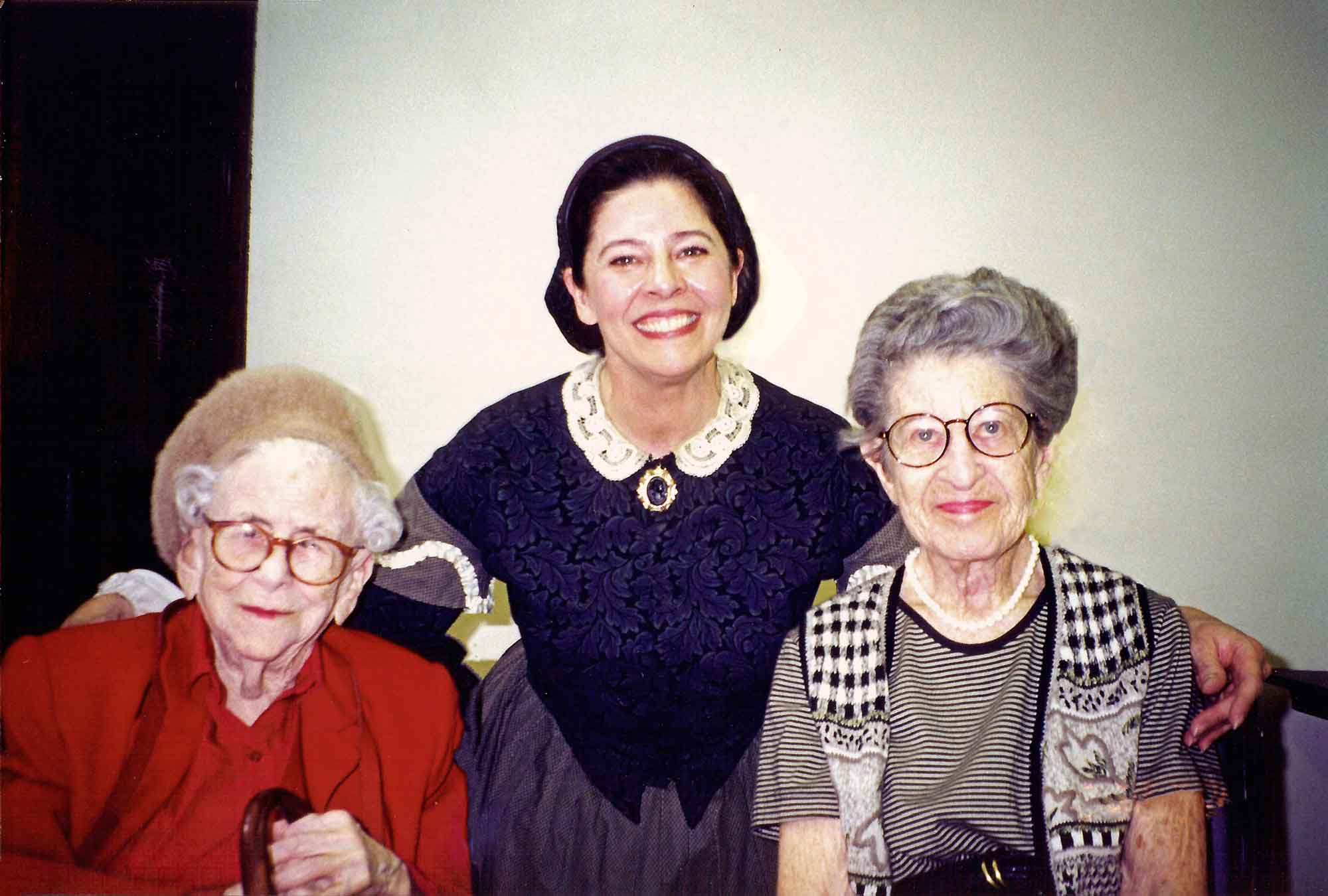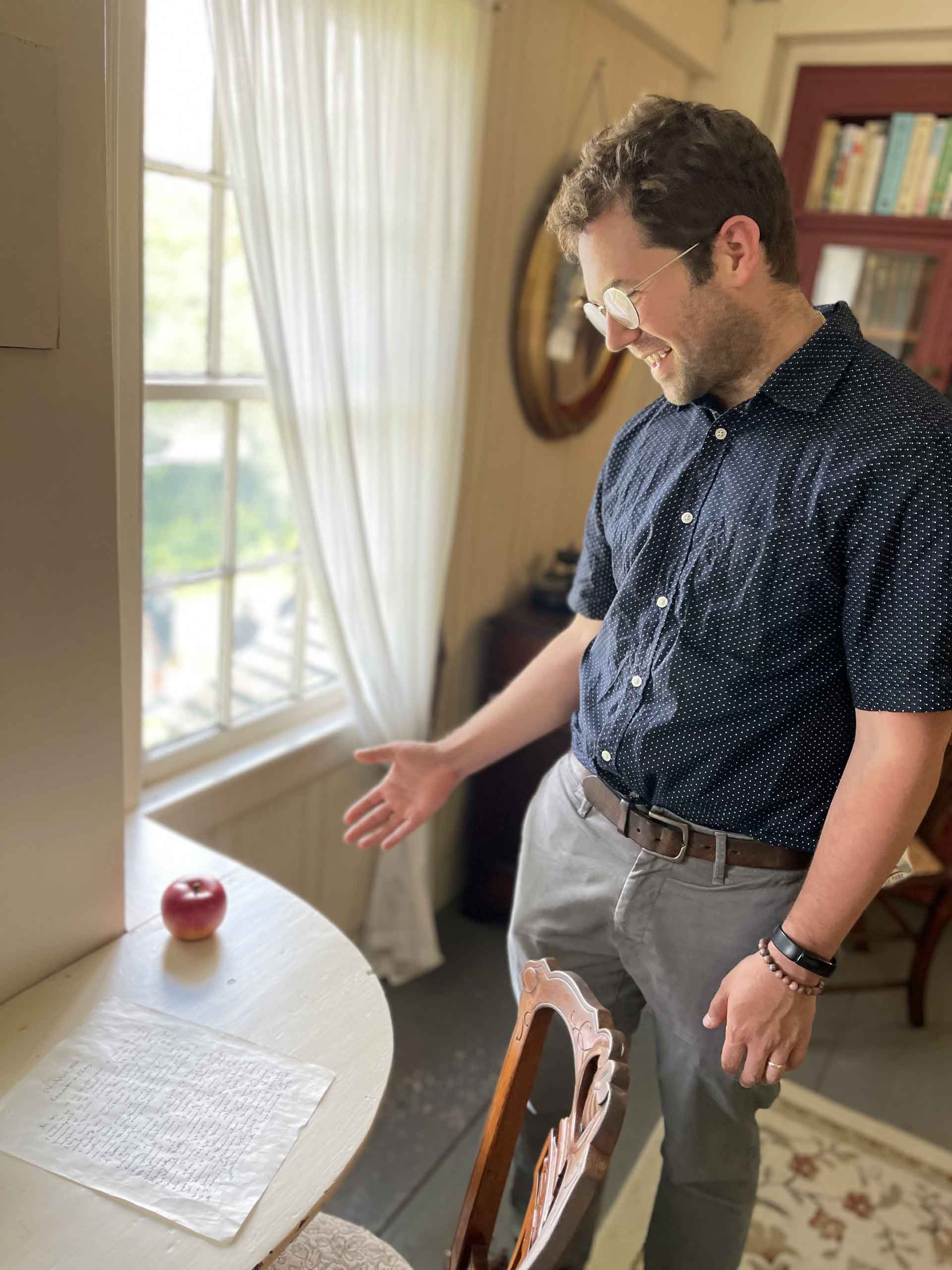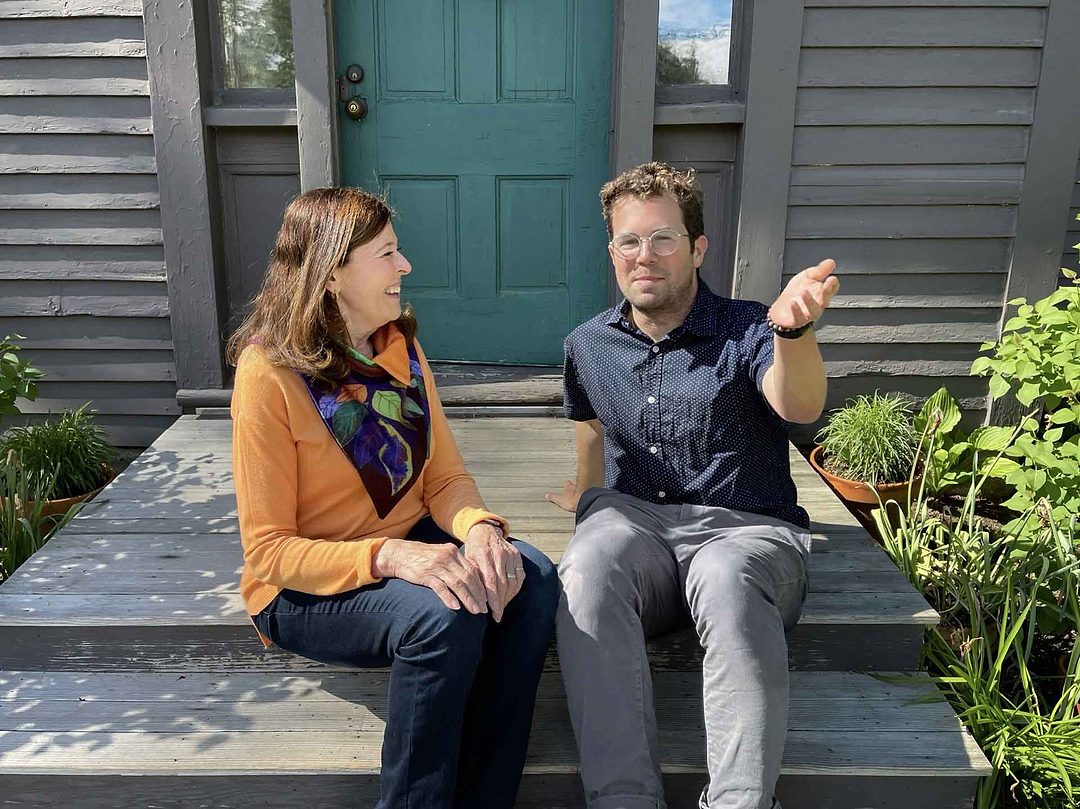Max Chapnick, of Northeastern University, has been in the news lately for possibly uncovering another of Louisa May Alcott’s pseudonyms. I was delighted to meet Max, not only to discuss his current work, but also to talk about the long, winding trail he followed to determine if Jo March’s thriller writing was something Alcott actually did. That trail begins in 1942 with Madeleine Stern and Leona Rostenberg, two of the most extraordinary women I’ve ever met.
Madeleine Stern, Leona Rostenberg, and A. M. Barnard
Madeleine’s biography of Louisa May Alcott is still the gold standard for many of us at Orchard House because her straight-forward style never relies on sensationalism, and we’ve yet to find a single factual error in her superbly researched 1950’s book, Louisa May Alcott, A Biography. After long admiring Miss Stern as a consummate Alcott authority, I was privileged to meet Madeleine and her partner, Leona Rostenberg, when they were honored with The University of Connecticut’s life-time achievement award recognizing their significant contributions to the fields of bibliographic scholarship and rare book collecting.

Leona Rostenberg, Jan Turnquist (as Louisa May Alcott), and Madeleine Stern
| ©Maria PowersOn that occasion, I was asked to perform as Louisa May Alcott following the award presentation dinner where I was seated with them. Following my performance, as Madeleine and Leona were leaving, Madeleine said to me, “You are Louisa May Alcott! Louisa would have loved this!” Inviting me to call any time, she jotted down her phone number. Quite blown away, I walked on air to my changing room. The next day I called. “Miss Stern, this is Jan Turnquist,” I began. Before I could say more, Madeleine quipped, “You mean Louisa May Alcott!” Thanking her, I asked if I could quote her comment: “You are Louisa May Alcott.” She answered, “I just said it again, now when can you come to lunch?” Thus began a remarkable friendship. I made many trips to the stately upper East Side apartment the two shared. On my last visit, I was asked to stay with Madeleine in her final illness and was with her when she passed away.
Over the years I was privileged to hear so many wonderful stories. One of my favorites is best described in Madeleine’s own words: “A visit to an Alcott Collector in early 1942… propelled us on the rosy path to discovery. Carroll Atwood Wilson …was distinguished in every way, in the law that was his profession and in book collecting that was his hobby… (he) embraced thirteen authors, ranging from Emerson to Hawthorne, from Trollope to Hardy. Among his ‘representative men’ was one representative woman — Louisa May Alcott. Greeting us cordially, he enthusiastically showed us his signed volumes… manuscripts and letters… one written by Aaron K. Loring around 1864 to Louisa… outlining his standards for popular literature. All three of us mused aloud about that arresting letter, and our musings prompted our host to say… ‘All of us know that Jo March wrote sensational stories and published them in secret. The three of us suspect that Louisa Alcott did the same thing over some pseudonym. . . Miss Rostenberg…Why don’t you go ahead and discover Louisa’s pseudonym and the thrillers she wrote?’”

The Olive Branch was one othe papers that published Louisa’s thrillers.
| Public domainMadeleine continues, “Leona vividly recalls… the drama that followed at Harvard’s Houghton Library: ‘I … espied a small clutch of letters that seemed to belong together. As I picked up one of them, I immediately felt hot and cold and strangely faint. The letter was dated January 21, 1865. It was addressed to ‘Dear Miss Alcott’ and it said: ‘You may send me anything… that you do not wish to ‘father,’ or that you wish A. M. Barnard, or ‘any other man” to be responsible for, & if they suit me I will purchase them… Let me hear from you. Very Truly Yours J. R. Elliot’… Now I knew the pseudonym…(and) the name of one of Miss Alcott’s … clandestine stories, V.V. (and) the name of the periodical that had carried it, The Flag of Our Union… three other letters mentioned another title, The Marble Woman,…and it referred in glowing terms to yet another product of A. M. Barnard’s racy pen’… ‘Behind a Mask.’
Leona had found the smoking gun! She told me “I let out a war whoop in the sacred precincts of Houghton Library.”
Max Chapnick and E. H. Gould
Because of Leona’s discovery, Max knew that Louisa wrote thrillers under pseudonyms, and from reading Madeleine’s introduction to a volume of Alcott thrillers, he knew that Louisa had written a story called The Phantom that had never been found. Alone in his apartment one evening while using the American Antiquarian Society’s digital database, he found a story called The Phantom written by E. H. Gould. At first Max didn’t think much of it, but hours later, haunted by that title, a thought struck him out of the blue: Could E. H. Gould be an Alcott pseudonym? Could this story be Louisa’s Phantom?
This question tantalized Max for a year and a half as he searched for corroboration. He spent countless hours at Harvard’s Houghton Library, where Leona had found her “smoking gun” evidence — alas, to no avail!

Max Chapnick at Louisa May Alcott’s desk
| ©Jennie WattersWhen talking about this quest with his good friend, Solan Kelleher, a reporting fellow at WBUR, Max wondered if the station might be interested in this story. Perhaps an Alcott expert or aficionado would be intrigued and help in his search for corroboration. Solan’s editors liked the idea and sent him to interview me and others. In the interview, I said that I felt open to the idea that E. H. Gould could be an Alcott pseudonym since the Gould story had elements that resonate with Alcott.
Although Max had published a scholarly article on The Phantom in J19: The Journal of Nineteenth Century Americanists, the WBUR broadcast was the first widely-heard mention of the E.H. Gould connection. In today’s world, it doesn’t take long for word to travel and for excited folks to weigh in, sometimes overstating the case. Max would, indeed, love to confirm that Gould is one of Louisa’s noms de plume, but he is still investigating and is very open to Alcott experts and other serious researchers weighing in. Max, who just received his doctorate, said recently “You don’t need a PhD to do this work.” He has also begun using other tools, such as a sophisticated computerized analysis system which uses algorithms to compare writing styles of known Alcott thrillers to the Gould piece.
Concerning the possibility of the Gould name being an Alcott pseudonym, I have expressed cautious optimism. Like Max I would love to know definitively that Gould is one of Louisa’s noms de plume. But also like Max, I really want the truth. Like Madeleine and Leona, Max has a sense of integrity and persistence which I admire. Perhaps you, Dear Reader, will help in this enterprise. Stay tuned!
Source: “A. M. Barnard”: Chapter 8, pp. 116-131, of Old Books, Rare Friends: Two Literary Sleuths and Their Shared Passion (New York: Doubleday, 1997)


